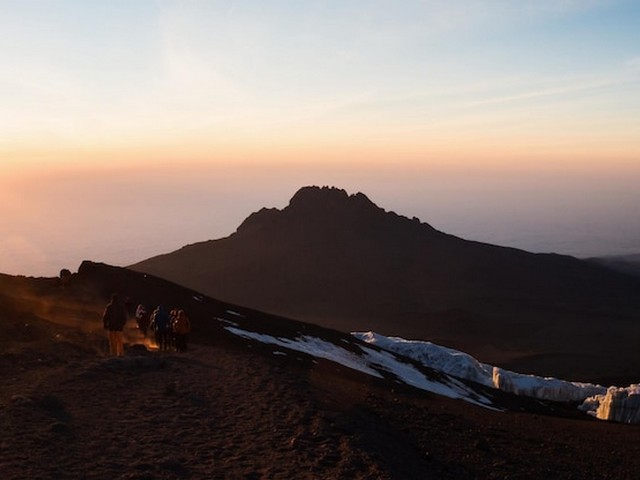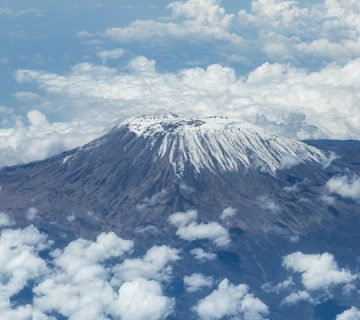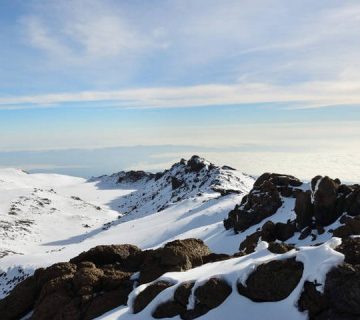Green Travel Advice For Kilimanjaro Climbers
The majestic Mount Kilimanjaro is not only a natural wonder but also a beacon for eco-conscious travelers from around the globe. As custodians of this stunning ecosystem, we at the Kilimanjaro Centre for Trekking and Ecotourism (KCTE) recognize the critical role each climber plays in preserving its beauty and biodiversity. Embarking on this marvelous ascent isn’t just about reaching the summit; it’s about embracing sustainable practices that ensure future generations can enjoy the same enchanting experience.
In this detailed guide, we’ll walk you through essential green travel advice tailored for climbers aiming to conquer Kilimanjaro responsibly. Prepare to be inspired and informed, as we help you align your adventure spirit with eco-friendly initiatives!
Sustainable Trekking: Your Footprint Matters
Choose Eco-Friendly Tour Operators
When planning your Kilimanjaro climb, selecting a responsible trekking company is paramount. At KCTE, we pride ourselves on our sustainable tourism practices. From employing local guides and staff to using environmentally friendly equipment, every aspect of our operations is designed with sustainability in mind.
Pack Light and Eco-Conscious
The mantra ‘Pack it in, pack it out’ is crucial for maintaining the pristine conditions of Kilimanjaro’s trails. Lightweight, reusable, and biodegradable materials can significantly reduce the waste footprint of your climb. Opt for solar chargers, LED headlamps, and eco-friendly water bottles. Remember, every ounce counts when it comes to preserving the natural environment.
Respect Local Wildlife and Flora
Mount Kilimanjaro is home to a delicate ecosystem. As you ascend through its various climate zones, from lush rainforests to alpine deserts, you’ll encounter diverse wildlife and plants. Maintaining a safe and respectful distance ensures minimal disturbance to these species.
Stick to the Trails
Veering off the designated paths can lead to erosion and other forms of environmental degradation. Stick to the trails and follow your guide’s instructions to minimize your impact on the surrounding habitat.
Contribute to Conservation Efforts
Engage with Local Communities
Sustainability is also about social responsibility. We encourage climbers to engage with local communities. Whether it’s visiting a local village or purchasing handmade souvenirs, these interactions help support the local economy and promote cultural exchange.
Support Conservation Initiatives
Part of your trekking fee at KCTE goes towards conservation projects that protect the environment and improve the well-being of local communities. Additional donations are always welcomed and greatly appreciated.
Waste Reduction Techniques on Kilimanjaro
Use Refillable Water Bottles
One significant source of pollution on the trails is disposable plastic bottles. By using a refillable water container, you contribute to reducing this waste. KCTE provides water refill points at various camps to ensure you stay hydrated without contributing to plastic pollution.
Practice Leave No Trace Principles
Adhering to Leave No Trace principles is critical. Dispose of all waste properly, minimize campfire impacts, and leave what you find. Our guides are trained to enforce these principles rigorously, ensuring a minimal environmental footprint.
Eco-Friendly Gear and Clothing
Invest in Sustainable Brands
The gear and clothing you choose can make a big difference. Invest in products from brands committed to sustainability. Look for certifications like Fair Trade and Bluesign, which guarantee that products are made ethically and with minimal environmental impact.
Rent or Borrow Equipment
To avoid unnecessary production and waste, consider renting or borrowing equipment that you may not use regularly. KCTE offers rental options for high-quality, well-maintained gear suitable for the challenging conditions of Kilimanjaro.
Prepare and Educate Yourself
Understand the Mountain’s Ecology
Before your climb, take some time to learn about Kilimanjaro’s unique ecosystems. This knowledge will deepen your appreciation and compel you to adhere to sustainable practices.
Attend Eco-Preparation Sessions
KCTE offers pre-climb sessions focusing on ecological awareness and practical sustainability tips. These sessions are invaluable in preparing climbers to make environmentally sound decisions on their journey.
Why Choose KCTE?
Choosing KCTE means partnering with a leader in eco-friendly trekking on Mount Kilimanjaro. Our commitment to sustainability, combined with our deep respect for local culture and the environment, ensures an unforgettable climbing experience that also protects our planet.
FAQs on Green Travel for Kilimanjaro Climbers
What is the best time to climb Kilimanjaro for minimal environmental impact?
The best times are during the shoulder seasons — late March, early June, and late October. These periods help in avoiding the large crowds of the high seasons, thereby reducing trail erosion and pollution.
How can I offset my carbon footprint when traveling to Tanzania?
Consider investing in carbon offset programs that fund renewable energy or reforestation projects. You can also choose direct flights to reduce emissions where possible.
What should I do if I see other climbers littering?
Politely remind them of the importance of maintaining the cleanliness of the environment. If the behavior continues, inform your guide who can address the issue more formally.
Conclusion
Climbing Kilimanjaro is a profound journey that goes beyond physical endurance; it’s about making a positive impact on the environment. By following the green travel advice outlined in this guide, you contribute to the preservation of this magnificent mountain. Ready for an adventure that treads lightly on Earth? Book your Kilimanjaro climbing experience with Kilimanjaro Centre For Trekking and Ecotourism (KCTE) today, and join a community of responsible climbers dedicated to making a difference!
Inspire, climb, and protect – with KCTE, where every step counts towards a greener tomorrow.
Book your eco-conscious climb with KCTE and become a part of Kilimanjaro’s sustainable trekking legacy.




